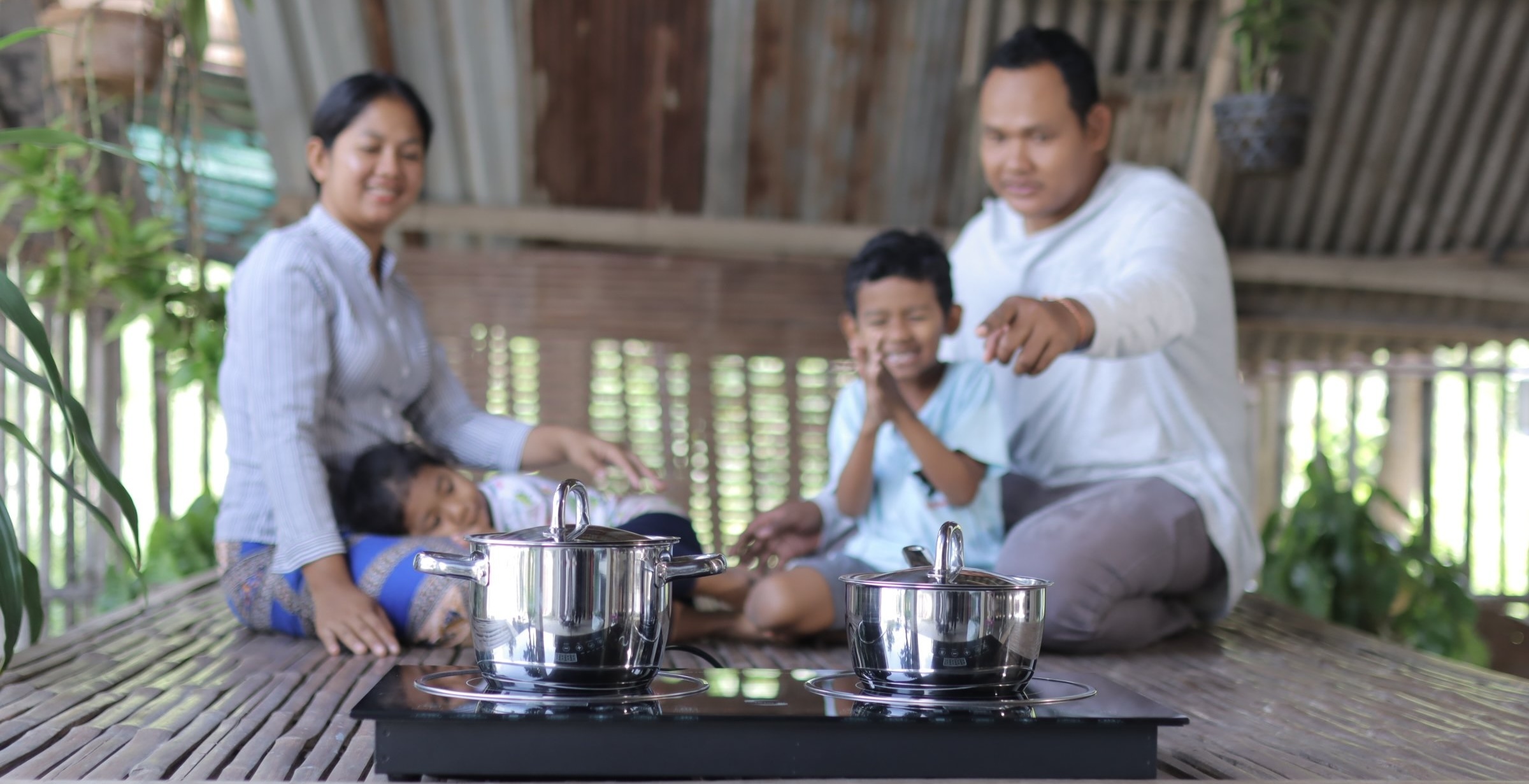About AIR-C3
Background. Over 3 billion people use solid biomass fuels, like wood, charcoal, and coal, to meet basic energy needs for heating and cooking. Burning these fuels in simple stoves or open fires results in the release of large quantities of toxic chemicals and particles, known as household air pollution (HAP). Exposure to HAP results in about 3 million deaths annually from chronic outcomes, like cardiovascular and respiratory diseases, pneumonia, and birth outcomes. Attempts to burn these fuels more cleanly have not significantly reduced air pollution; focus has now shifted to cleaner cooking solutions, such as liquefied petroleum gas (LPG) and electricity.
Recent evidence finds that cleaner fuels can significantly lower exposure HAP. The multi-country Household Air Pollution Intervention Network (HAPIN) trial provided 3200 pregnant women with free LPG stoves and fuel led until their child's first birthday. The intervention, which was used nearly exclusively, lowered exposures substantially.

AIR-C3 Motivation. In some communities, where electricity is sufficient and reliably available, it may be possible to leapfrog gaseous fuels like LPG and "skip" straight to cooking with electricity -- arguably the cleanest cooking technology, at least when considering emissions at the household. Our study will investigate electric induction cooking as a potentially cleaner and more effective technology on a large scale. We will co-design and assess strategies to encourage affordable purchase and consistent use of electric induction stoves among low-income households in peri-urban Cambodia. Our specific aims are:
Aim 1. Develop, refine, and test implementation strategies for purchase and use of induction cookstoves. Through a three-phase, theory-informed learning and refinement approach, we will (a) identify determinants of stove purchase and use and biomass disuse, (b) develop public messaging and refine direct-sales and intervention strategies to promote purchase and use among participating households; and (c) establish targeted induction stove and electricity subsidies. We will apply established implementation science frameworks to map implementation determinants (facilitators and barriers) against intervention functions (e.g., incentives, modeling, education). Rapid prototyping and trials of improved practices will allow us to refine the resulting implementation strategies to be packaged and tested in Aim 2.>
Aim 2. Evaluate novel induction stove promotion strategies on stove purchase and use with a hybrid type II cluster-randomized trial. We will randomly allocate 62 peri-urban villages to receive one of four integrated implementation strategies—direct sales with varied pro-poor subsidies or public sector distribution. Using the RE-AIM framework, we will assess the number, proportion, and characteristics of households Reached by the strategies; the impact of implementation strategies on purchase and use of induction (primary outcomes), disuse of biomass fuels, and exposures to PM2.5, and assess determinants of use (Effectiveness); the barriers and enablers of Adoption by implementers in Cambodia; delivery, fidelity, and dose of Implementation strategies; and Maintenance of effectiveness and implementation outcomes.
Aim 3. Estimate costs, benefits, and incremental cost-effectiveness of the stove promotion strategies. We will measure costs and direct and indirect benefits of the intervention strategies designed in Aim 1 and tested in Aim 2 to (a) model health benefits attributable to exposure reductions; (b) calculate reductions in airborne pollutants; (c) monetize changes in household time-activity, and (d) assess outcomes based on traditional cooking roles and responsibilities. We will also evaluate implementation costs per household targeted and per household switching to use of induction stoves using a societal perspective. We will model the costs of strategies and policies to scale up implementation.
Impact. We will be among the first to measure the impact of theory- and evidence-based promotion strategies to increase uptake and sustained use of induction stoves to reduce biomass fuel use. We will apply systematic approaches to implementation strategy development, establish plausible mechanisms of change for these strategies, and conduct a robust economic evaluation as part of a hybrid trial design. Our novel measurements on the effectiveness of induction cooking for reducing HAP exposures among underserved communities will establish the feasibility and potential health benefits of induction cooking, with an emphasis of reducing exposure to women (who serve as the primary cooks), health, and welfare. We will provide actionable strategies to achieve equitable, sustainable access to induction stoves that may translate to other cleaner cooking technologies across Southeast Asia and elsewhere and highlight the value of implementation science for addressing persistent global health challenges.
AIR-C3 is funded by National Institute of Environmental Health Sciences (1R01ES035395-01A1).
